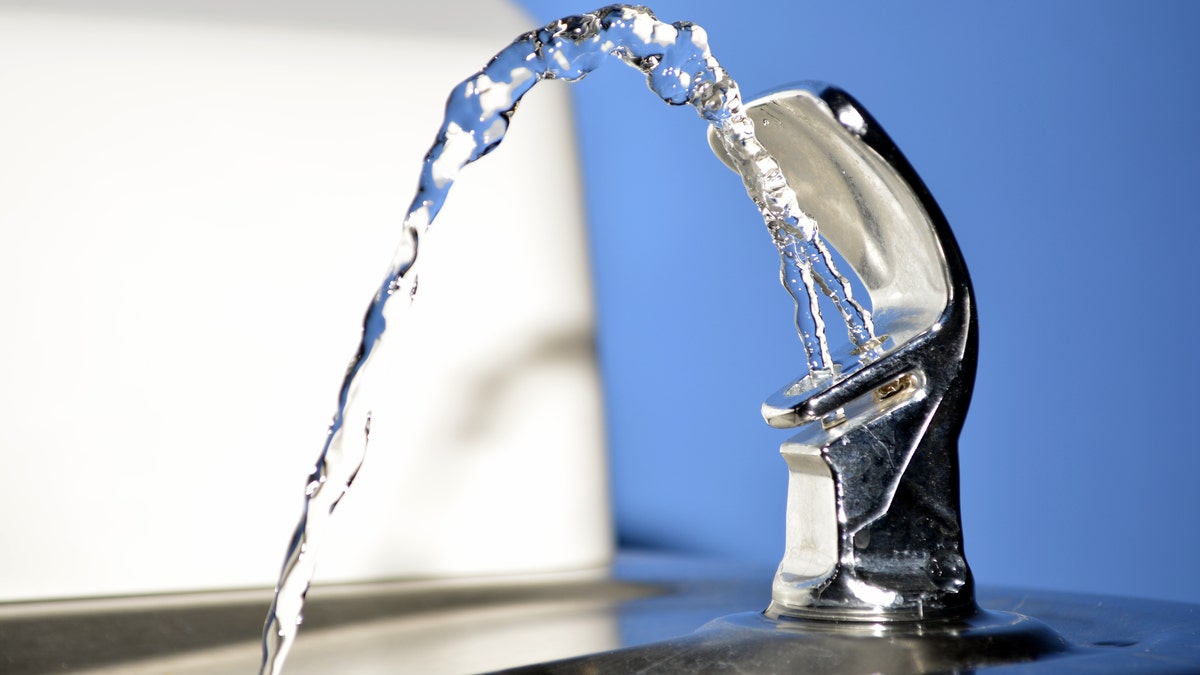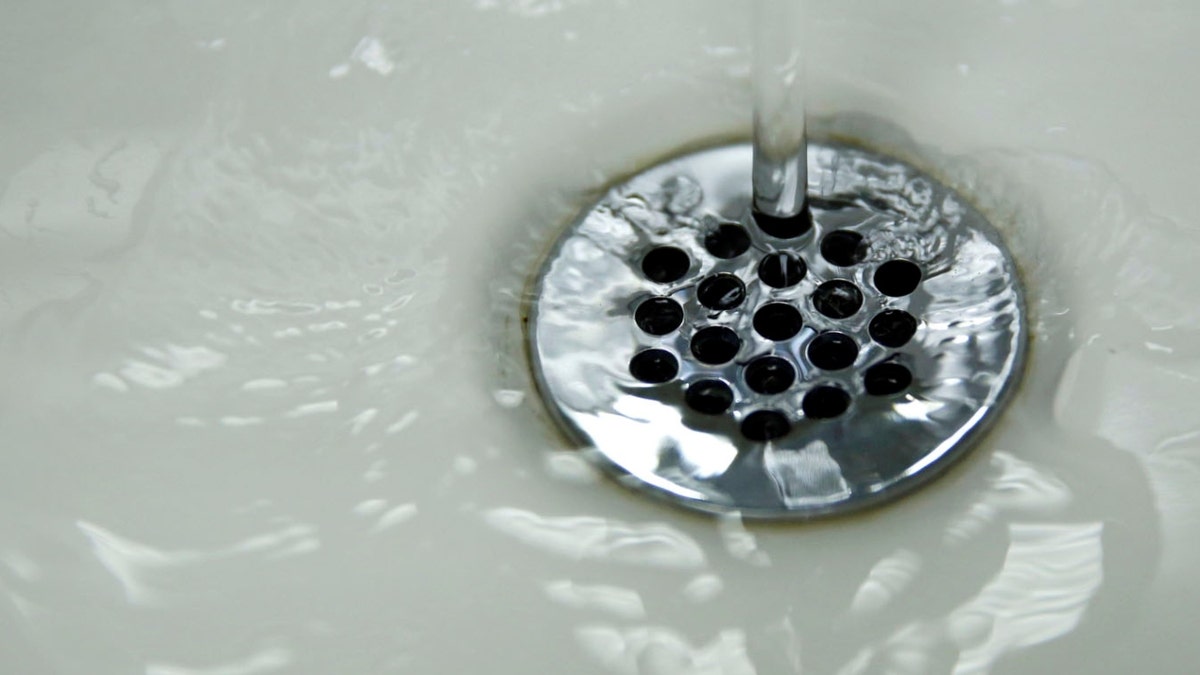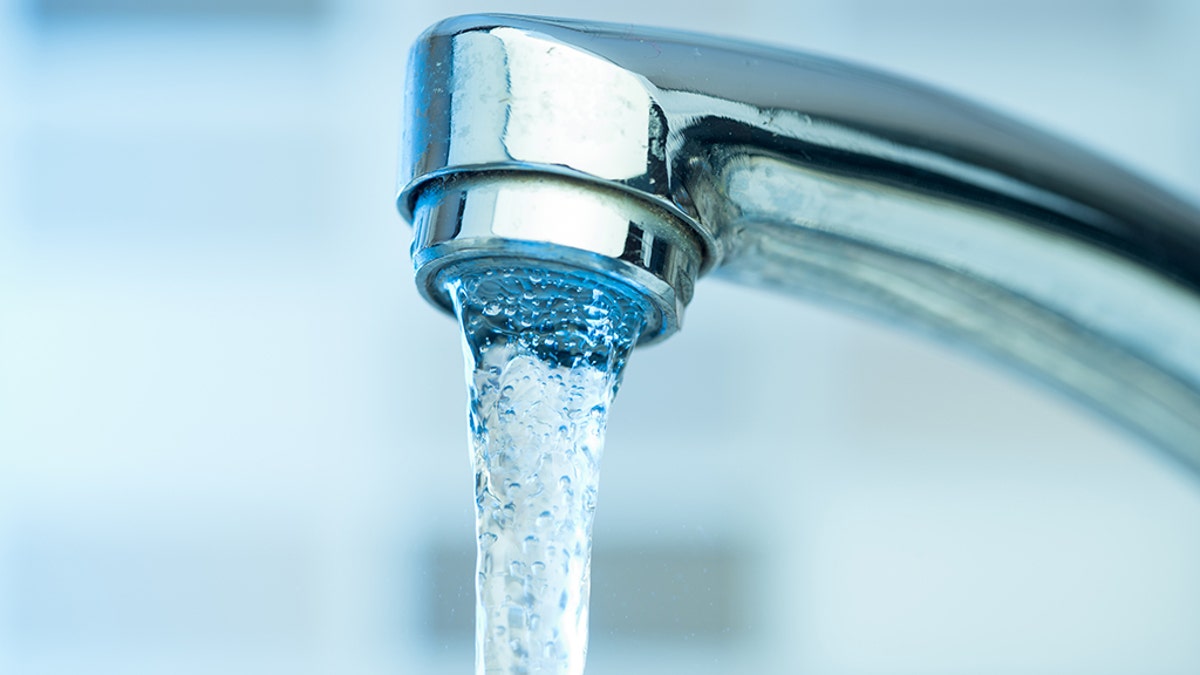Ohio residents are concerned about air and water safety
Fox News correspondent Garret Tenney discusses how East Palestine, Ohio residents are facing growing worry over the safety of the air and water in their community on ‘Special Report.’
Could drinking from the school’s water fountain put your child’s health at risk?
The odds are higher than parents might think, according to a new report from the Environment America Research & Policy Center in Denver, Colorado, called "Get the Lead Out."
Researchers examined each U.S. state’s policy in regard to preventing lead contamination of drinking water.
More than half the states got a failing grade of an F.
KIDS’ SCREEN TIME SKYROCKETED DURING PANDEMIC — AND IT’S STILL HIGHER THAN PRE-COVID
Eight states received a D and 13 got a C.
Only two states — New Hampshire and New Jersey — plus Washington, D.C., scored a B.

Could drinking from a school’s water fountain put your child’s health at risk? A new report called "Get the Lead Out" gave many states a failing grade. (iStock)
John Rumpler, lead author of the study and clean water program director for Environment America, said an F generally means a state has done "little to nothing" to stop lead contamination of schools’ water.
"Many of these states now have limited, voluntary testing programs, but testing doesn't make the water any safer," Rumpler told Fox News Digital via an email.
"Instead of spending time and money on more tests confirming that kids have been drinking lead-tainted water, families would be better served if officials took steps to prevent lead contamination in the first place."
More than half of U.S. states got a failing grade of an F for their efforts to protect schools' drinking water from lead.
Environment America last performed this study in 2019.
The results weren’t promising then, but Rumpler said the data confirming widespread contamination of schools' water is even stronger now.
The new study was released on Thursday morning, Feb. 23, 2023.
Health hazards of lead in drinking water
The dangers of drinking water tainted with lead — a toxic metal — are well-known and widespread.
In children, exposure to even small amounts over time can lead to behavioral and learning problems, stunted growth, lower IQ, hearing problems, anemia and damage to the nervous system, as listed on the EPA’s website.
POST-COVID, MANY PARENTS ARE GIVING KIDS FEVER-REDUCING MEDICINE WHEN IT'S NOT NECESSARY: STUDY
In rare cases, high levels of lead exposure can result in coma, seizures or even death.
The effects are far more pronounced in children than in adults.

The dangers of drinking water tainted with lead — a toxic metal — are well-known and widespread. (REUTERS/Carlos Barria)
"Children have developing brains that are highly susceptible to the damaging effects of lead," Dr. Kelly Johnson-Arbor, medical toxicologist at the National Capital Poison Center in Washington, D.C., told Fox News Digital in an email.
"While a smaller number of children might be admitted to the ER with acute lead poisoning — from whatever source — millions of kids are at risk of behavioral, developmental and/or cognitive damage from low levels of lead," Rumpler added.
Efforts lacking in urban and rural schools
Rumpler was somewhat surprised to find that lead contamination of water is happening in suburban and rural schools as well as in urban ones.
"The time for state and local governments to step in and protect our kids' health is now."
"Tests have documented lead-tainted water in all types of communities — rural towns, big cities and affluent suburbs," the study findings stated.
"Examples include schools in Cherry Hill, New Jersey; Yarmouth, Maine; several school districts in upstate New York and suburban communities in Illinois."
AS EMERGENCY ROOMS SEE MORE OF AMERICA'S MENTALLY ILL KIDS, NEW STUDY PINPOINTS ISSUES
Among the schools that are testing their water, some found alarmingly high levels of lead.
At a Montessori school in Cleveland, for example, water from a drinking fountain was found to contain 1,560 parts per billion of lead; a faucet at an elementary school in Massachusetts tested at 22,400 parts per billion.
By comparison, the EPA only allows a maximum of 15 parts per billion, and the American Academy of Pediatrics (AAP) has called for limits to be set at 1 part per billion.
Where’s all the lead coming from?
The problem stems from aging school buildings — and old pipes.
A 2016 report in Education Week found that the average age of U.S. school buildings was 44 years.

In many cases, the service lines carrying water from the streets to the school buildings are also made from lead. (iStock)
"Because many schools are older and may contain lead pipes or older fixtures, it is certainly possible that these aging plumbing systems may experience corrosion over time, leading to the release of lead into the drinking water," said Johnson-Arbor.
In many cases, the service lines carrying water from the streets to the school buildings are also made from lead.
There is no federal law that requires schools to test drinking water for lead, per the U.S. Government Accountability Office.
Lead gasoline and lead-based paints were both banned in the 1970s.
However, Rumpler pointed out that limits on lead in plumbing and fixtures were not dramatically reduced until 2014.
New laws signify (slow) progress
The Environmental Protection Agency has called for drinking water to contain zero traces of lead due to health hazards.
Even so, there is no federal law that requires schools to test drinking water for lead, per the U.S. Government Accountability Office.
CDC ADDS COVID-19 VACCINES TO OFFICIAL IMMUNIZATION SCHEDULE FOR KIDS AS YOUNG AS 6 MONTHS
"In all states with failing grades, we could find no law requiring all schools to even test their water for lead, never mind shut down taps where lead is detected or prevent contamination in the first place," said Rumpler.
However, on a positive note, some areas — such as Maryland and Washington, D.C. — have made at least some improvements to their laws surrounding schools’ water safety.

The Environmental Protection Agency has called for drinking water to contain zero traces of lead due to health hazards. (iStock)
"Since our last report in 2019, several states have gone from utter failure to taking at least some incremental steps toward safer drinking water for children at school," Rumpler told Fox News Digital.
"Yet in nearly every case, even these new policies only require remediation of taps if testing confirms lead concentrations in water above a certain threshold."
These "test and fix" policies are better than nothing, but they don’t eliminate the risk — especially when lead concentrations can vary from one faucet or fountain to the next.
What’s being done and what still need to happen?
In an ideal world, schools would remove any lead-containing plumbing and fixtures to eliminate the problem at the source.
Yet when that’s not feasible, Rumpler calls for replacing fountains with water stations that have filters certified to remove lead.
These filters capture the lead before it can contaminate kids’ water bottles (or lunches, when used in the cafeteria).

The report's author calls for replacing taps and fountains with water stations that have filters certified to remove lead, which can be used for filling water bottles or cooking in the cafeteria. (The Associated Press)
Schools in some cities — including Portland, San Diego and Detroit — have already started this effort.
Ideally, Rumpler says all schools should have these filtered water stations, with at least one per 100 students and staff members.
Parents can ask principals to identify those filtered stations and make sure their kids only use those for drinking.
CLICK HERE TO SIGN UP FOR OUR HEALTH NEWSLETTER
For new construction or renovations, all fixtures and plumbing should use only lead-free materials.
"Given the pervasiveness of lead contamination in schools' water across the country, the time for state and local governments to step in and protect our kids' health is now," Rumpler said.
"It would take a small fraction of the unprecedented federal funding that states and school districts are now receiving to install filtered water stations at every school in America."
CLICK HERE TO GET THE FOX NEWS APP
A simple blood test can help diagnose lead exposure and poisoning in both children and adults. Concerned parents can contact Poison Control online at www.poison.org or by phone at 1-800-222-1222.
The series of reports was prompted, in part, by the 2014 water contamination scandal in Flint, Michigan, the study authors said.
Environment America says its "mission is to transform the power of our imaginations and our ideas into change that makes our world a greener and healthier place for all." The nonprofit is part of The Public Interest Network, "which operates and supports organizations committed to a shared vision of a better world and a strategic approach to social change," it says on its website.




















